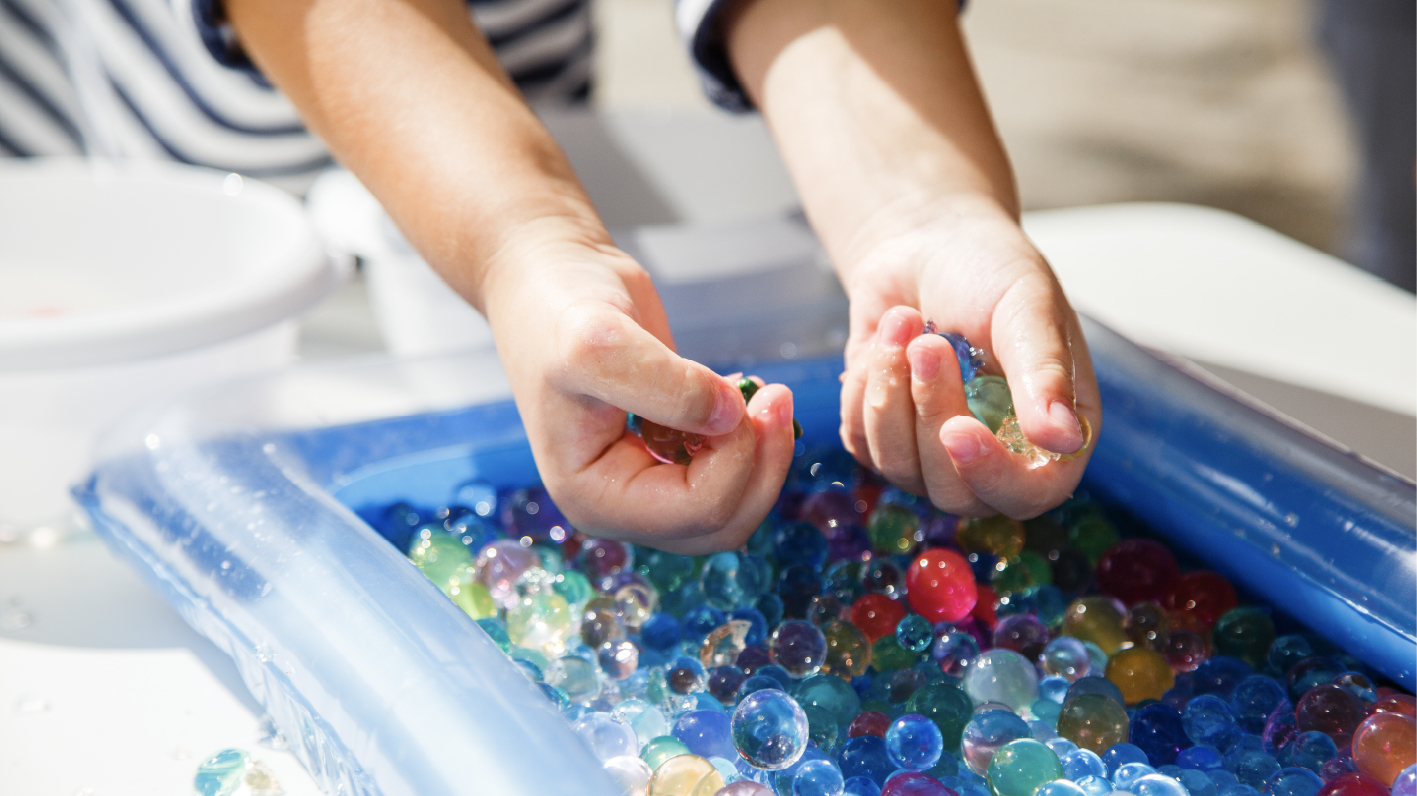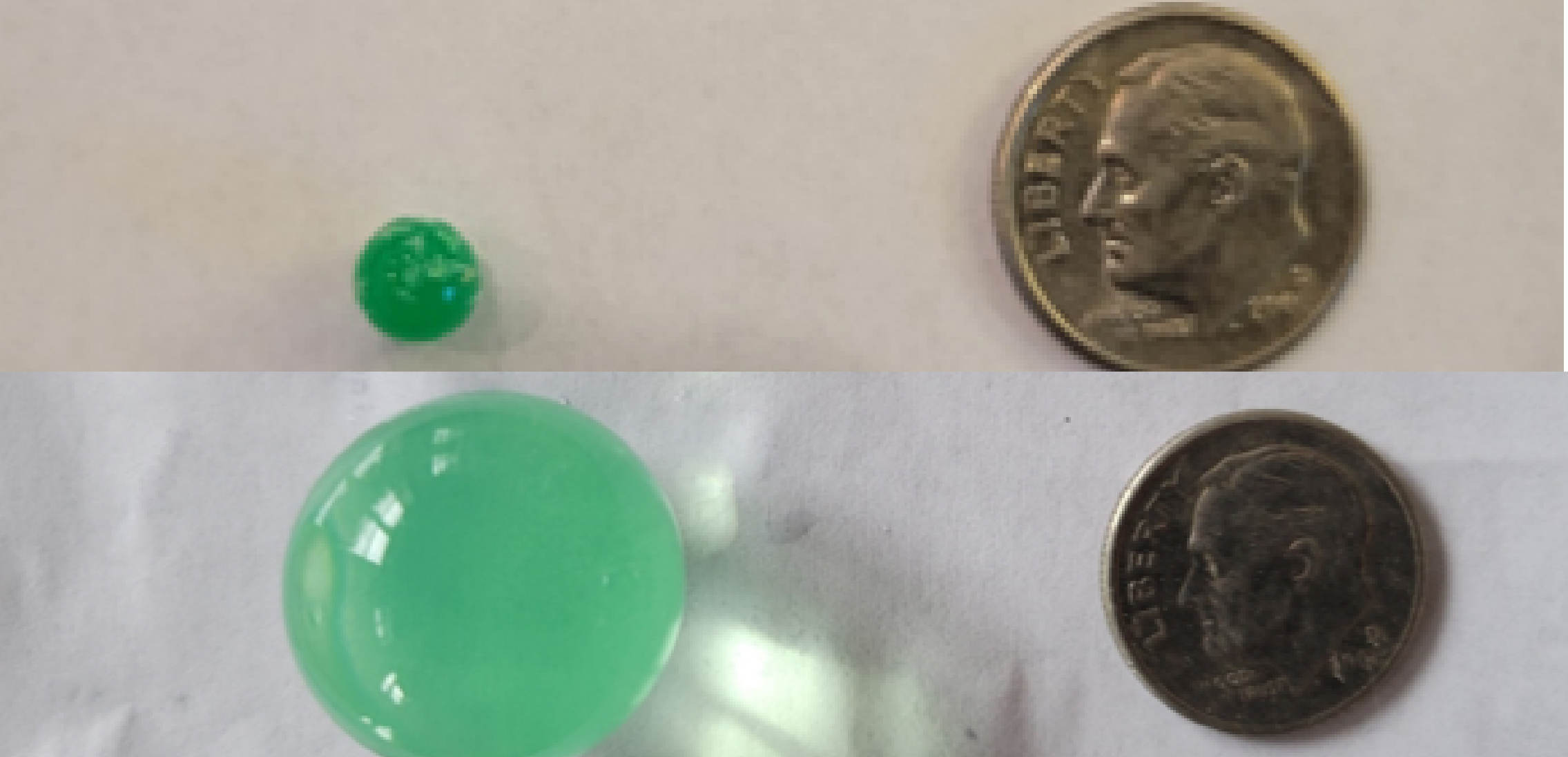Research In Action
Research In Action
Breadcrumb

The Poison Control Center at CHOP regularly monitors its data to watch for preventable home hazards. In the 5 years of 2020–2024, our Center recorded more than 400 cases involving expanding water toys and children. Nationally, between 2018 and 2022 there were nearly 7,000 emergency department visits due to “water beads” being swallowed, put in an ear or nostril, or injuring an eye. Serious injuries including bowel obstruction and death have been reported.
A 10-month-old girl was seen in an emergency department (ED) after 3 days of vomiting. Her parents thought she had a stomach virus, but her worsening spasms of pain were making them tearful. The ED doctors, concerned about a possible twist in the girl’s gut, did an ultrasound which surprisingly showed three large round circles blocking her intestines. Her parents hadn’t realized that she had swallowed some of the expanding water balls she had been playing with. These tiny beads were only the size of a pin’s head, but had grown dramatically after being swallowed and they had to be removed with surgery.
What Are Expanding Water Toys?
Water beads and expanding water toys are filled with superabsorbent polymers that swell to many times their original size when wet (very much like that stuff in baby diapers). These may be in craft kits or animal figure toys and can even be fired as projectiles from toy guns. Concerningly, they can get stuck in ears or nostrils, and the attractive small toys may be swallowed then grow to cause life-threatening intestinal blockages.
Similar, but perhaps less dangerous, “sensory toys” often contain water beads that are already expanded which are intended to help children with sensory and/or emotional regulation. In addition to being a choking hazard, some water beads have been found to contain a toxic chemical, acrylamide.

Advocacy for Safer Standards
Legislative bills to limit the sale of “water beads” and similar water-expanding toys in the U.S. were introduced in 2023 and 2024 but have not advanced. Manufacturing standards in the U.S. could make the toys safer for children, but foreign-made direct-to-consumer sales present additional safety challenges. Mindful of the precautionary principle, the Poison Control Center supports:
- Limitations on water bead size and degree of expansion, such as those proposed by the U.S. CPSC (on August 21, 2025, the U.S. CPSC announced that it had formally approved a consumer product safety standard for water bead toys.)
- Establishment of allowable limits of acrylamide extractable from water beads that is at or below the minimal risk level set by the American Society for Testing Materials (ASTM).
- Direction of further research to fully define water bead characteristics, both physical and chemical, which pose the greatest risk for child injury.
- Regulation holding both online and brick-and-mortar retailers accountable for selling products that have been recalled due to safety concerns.
Safety Guidance for Families
The best way to prevent child injuries from water beads is to keep them out of the home. It is especially important to protect children under 3-years of age from expanding water toys. Clinicians can recommend the following to families:
- Expanding water toys should be purchased from well-known stores (buyers should be wary of online 3rd-party sellers).
- Caregivers should closely supervise use of water beads. They should store water beads in a secure container that is out of sight, out of reach, and out of mind of children.
- Childcare centers, camps, schools, and other child group settings should avoid having expanding water toys.
If you suspect that a child has ingested water beads or beads from a sensory toy, please call the Poison Help Hotline at 1-800-222-1222 to be connected to a specialist.

